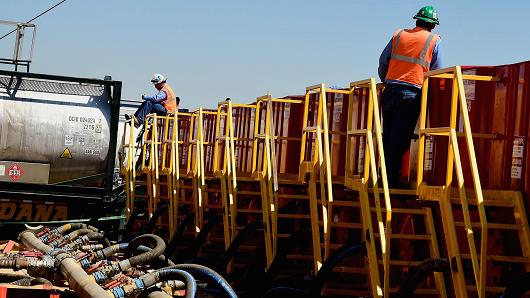
Players suggest bringing crude oil and natural gas under the new tax regime initially
The oil and gas industry faces a ‘win some, lose some’ situation as the GST Council continues to work on fitment rates for various segments of the business.
Considering the demand of the industry, the Finance Ministry had suggested a 5 per cent tax rate on natural gas at the GST Council meeting of June 3. But, the same was opposed by many States at the meeting on Sunday.
On June 7, the Association of Oil and Gas Operators wrote to the Revenue Secretary seeking inclusion of crude oil and natural gas under Goods & Services Tax (GST) regime.
AOGO said that bringing all five petroleum products — crude oil, natural gas, motor spirit (petrol), high speed diesel, and ATF — at one go under GST will be difficult, so crude oil and natural gas could be included initially.
One of their arguments was that the share of taxes from crude oil and natural gas is negligible and its inclusion under GST will not have much impact on State revenues. Besides, non-inclusion of natural gas in GST will also spike cost of power, fertiliser, petrochemicals and even CNG.
The non-inclusion will increase costs through additional taxes on goods and services as input tax credit is not allowed on these products under GST, the AOGO argued.
According to the association, crude oil and natural gas contribute a mere 0.9 per cent to the total tax collection of the States.
To create a balance between various segments of this industry may not be easy as upstream (oil and gas exploration & production), downstream (refining and retailing), mid-stream (pipelines) have different demands and specifications, the AOGO said.
A senior official told BusinessLine: “It is an ongoing process. A number of things still need to be sorted out. As GST regime goes along there will be many corrections based on feedbacks and reactions. The GST Council is a permanent platform and these proposed rates are not cast in iron. They can always be tweaked.”
On liquefied petroleum gas (LPG), which is already included under the GST regime, the industry has voiced concern on different rates for supply in commercial and domestic markets.
One of the primary reasons for diversion of LPG cylinders from domestic to commercial was the price differential. While GST rate on supply of LPG for commercial use is 18 per cent, for domestic use it is 5 per cent. The Federation of Indian Petroleum Industry has pitched for a uniform GST rate of five per cent for both domestic (14.2 kg/cylinder) and commercial LPG (19 kg/ cylinder) to avoid diversion.
The auto LPG business and bio-diesel players have also raised concern. Suyash Gupta, Director General, India Auto LPG Association, said: “The current 18 per cent rate on auto LPG is discriminatory, as CNG will be under the 5 per cent slab”.
At present, auto LPG is taxed closer to 23 per cent, while natural gas enjoyed a tax free status in some States such as Delhi. Gupta said that since both fuels are clean, they should be taxed at parity.
Sandeep Chatuvedi of the Biodiesel Association of India, said: “The 18 per cent GST rate is going to kill the biodiesel industry as it removes the price difference between diesel and biodiesel”. The present tax incidence on biodiesel in the country is close to 5 per cent.
[“Source-ndtv”]




